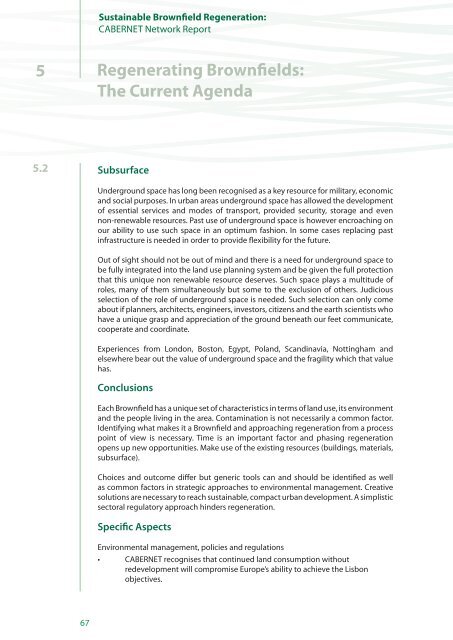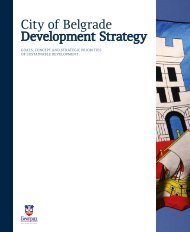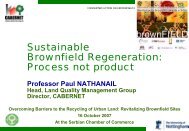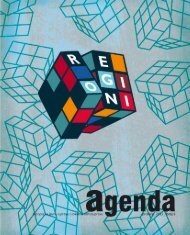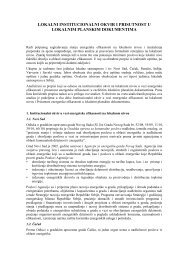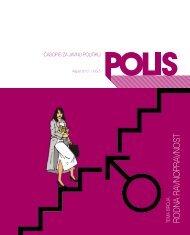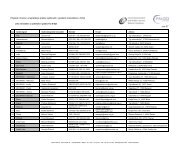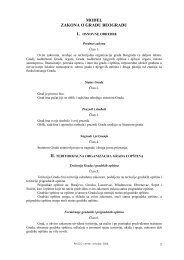Sustainable Brownfield Regeneration: CABERNET Network Report
Sustainable Brownfield Regeneration: CABERNET Network Report
Sustainable Brownfield Regeneration: CABERNET Network Report
Create successful ePaper yourself
Turn your PDF publications into a flip-book with our unique Google optimized e-Paper software.
<strong>Sustainable</strong> <strong>Brownfield</strong> <strong>Regeneration</strong>:<strong>CABERNET</strong> <strong>Network</strong> <strong>Report</strong>5Regenerating <strong>Brownfield</strong>s:The Current Agenda5.2 SubsurfaceUnderground space has long been recognised as a key resource for military, economicand social purposes. In urban areas underground space has allowed the developmentof essential services and modes of transport, provided security, storage and evennon-renewable resources. Past use of underground space is however encroaching onour ability to use such space in an optimum fashion. In some cases replacing pastinfrastructure is needed in order to provide flexibility for the future.Out of sight should not be out of mind and there is a need for underground space tobe fully integrated into the land use planning system and be given the full protectionthat this unique non renewable resource deserves. Such space plays a multitude ofroles, many of them simultaneously but some to the exclusion of others. Judiciousselection of the role of underground space is needed. Such selection can only comeabout if planners, architects, engineers, investors, citizens and the earth scientists whohave a unique grasp and appreciation of the ground beneath our feet communicate,cooperate and coordinate.Experiences from London, Boston, Egypt, Poland, Scandinavia, Nottingham andelsewhere bear out the value of underground space and the fragility which that valuehas.ConclusionsEach <strong>Brownfield</strong> has a unique set of characteristics in terms of land use, its environmentand the people living in the area. Contamination is not necessarily a common factor.Identifying what makes it a <strong>Brownfield</strong> and approaching regeneration from a processpoint of view is necessary. Time is an important factor and phasing regenerationopens up new opportunities. Make use of the existing resources (buildings, materials,subsurface).Choices and outcome differ but generic tools can and should be identified as wellas common factors in strategic approaches to environmental management. Creativesolutions are necessary to reach sustainable, compact urban development. A simplisticsectoral regulatory approach hinders regeneration.Specific AspectsEnvironmental management, policies and regulations• <strong>CABERNET</strong> recognises that continued land consumption withoutredevelopment will compromise Europe’s ability to achieve the Lisbonobjectives.67


